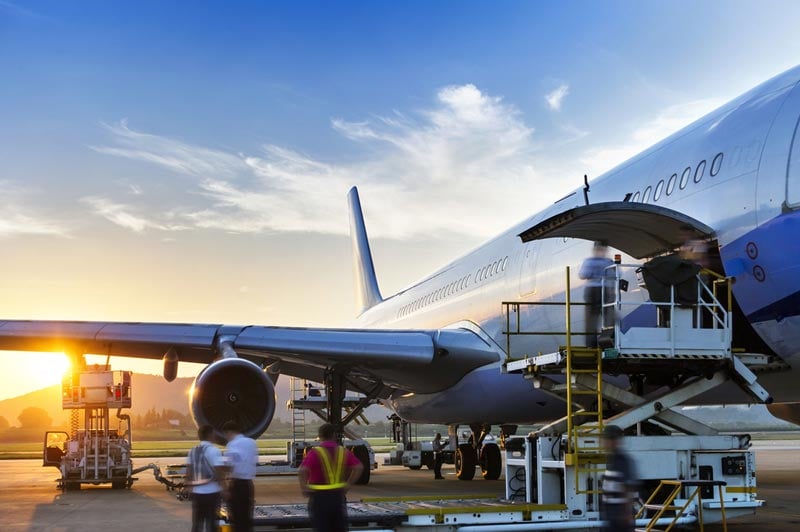Air cargo demand from Northeast Asia to Europe is currently outpacing growth at a global level, which throws up numerous questions over what sets this corridor apart from the crowd and how shippers should approach the coming weeks and months.
This blog will demonstrate why shippers may be well-served looking in the direction of their vendors for enlightenment.
Corridor and global demand growth
Northeast Asia to Europe is one of the world’s top three corridors and the first three weeks of March saw double-digit year-on-year growth in air cargo volumes, measured in chargeable weight. Demand at a global level grew a more modest 4% during the same period.
This growing demand from Northeast Asia to Europe is driven largely by robust e-commerce volume and sits well above the levels seen 12 months ago in both chargeable weight per shipment and shipment count.
The Civil Aviation Administration of China (CAAC) also reported double-digit growth in China’s total international air cargo and mail volumes over January and February, albeit at a slower pace than in 2024.
(note: Northeast Asia includes mainland China, Hong Kong, Taiwan, Macau, Japan and South Korea)
Rate developments
Spot rates sold by airlines to freight forwarders on this corridor have risen to USD 4.28 per kg, despite a dip in early March. This is up 11% year-on-year.

This rate increase cannot be attributed to jet fuel prices. Despite the EU’s ReFuel aviation initiative, which mandates a 2% blend of sustainable aviation fuel (SAF), prices have declined thanks to falling crude prices and softer dollar.
If you are a shipper, you will be wondering how this situation will play out in the coming months. Perhaps the year-on-year demand growth will spook you into entering a new long-term contract.
Before making such as decision, there are other market dynamics to consider that provide a more nuanced view.
Supply and demand
Firstly, the dynamic load factor on this corridor, which measures aircraft capacity utilization considering both weight and volume, reached 91% in the week ending 23 March.
A dynamic load factor above 80% should make a shipper take notice because it signals capacity constraints with increased negotiating power from freight sellers.
However, while capacity is tight right now, the situation may change in the coming months. Sensing an opportunity on the back of demand growth, several airlines are planning to add capacity on this route in summer schedules, which could ease some pressure in dynamic load factor.
Seasonal rates provide a more rounded view
Secondly, much can be gleaned from the relationship between the spot rates and seasonal rates being offered by airlines to freight forwarders from Northeast Asia to Europe.
While showing strong year-on-year growth compared to other major corridors, airline-sell spot rates (valid for up to one month) are at the same level as the seasonal rates (valid for more than one month).
If the market was set for significant upward pressure, you would ordinarily expect spot rates to be higher than seasonal rates.
This is important information for the shippers who will ultimately end up buying this capacity from the freight forwarders.
Looking to freight forwarders for enlightenment
If a shipper wants to know how best to play these market conditions, they can look at the procurement tactics of their vendor, which is why this blog focuses on airline-sell rates to freight forwarders.
Just under 45% of westbound volumes are being bought by freight forwarders on the spot market. This is an increase from last year and demonstrates the level of caution being shown.
If there was confidence of significant upward pressure to come, you may expect a higher percentage at seasonal agreements as freight forwarders look to lock in lower rates with airlines so they can then sell to shippers at a higher price down the line.
Lessons from other major corridors
Shippers could also look towards a surge in freighter supply and softening e-commerce demand on the Transpacific eastbound corridor if/when the US authorities put systems in place for handling massive e-commerce volume in the upcoming months as a potential sign of what is to come on the Northeast Asia to Europe route.
As a side point, the weight load factor on the Northeast Asia to Europe corridor sits below the volume load factor highlighted previously in this blog by nearly 10 percentage points. This means shippers moving high-density cargo could secure discounts.
Story on the backhaul
Finally, the imbalance between the fronthaul and backhaul rates on this corridor is widening. The return leg from Europe to Northeast Asia is running at below 40% dynamic load factor while spot rates are down 16% year-on-year at USD 1.39 per kg. This is almost 15 cents below the seasonal rate.
Again, shippers should try to understand the strategy of their vendor, with more than half of volumes on the backhaul now bought on the spot market as freight forwarders avoid long-term commitments.
All is never quite what it seems
If you are shipping goods by air in 2025 there are huge uncertainties to content with, whether it is a potential slowdown in e-commerce growth or the knock-on impact of disruption to ocean supply chains in the Red Sea.
Corridors will react in different ways to these factors, or at least to different timelines. This blog demonstrates that, even during periods of such uncertainty, there are methods to gaining a better understanding of how and why markets are developing across global corridors – both now and in the weeks and months ahead.






